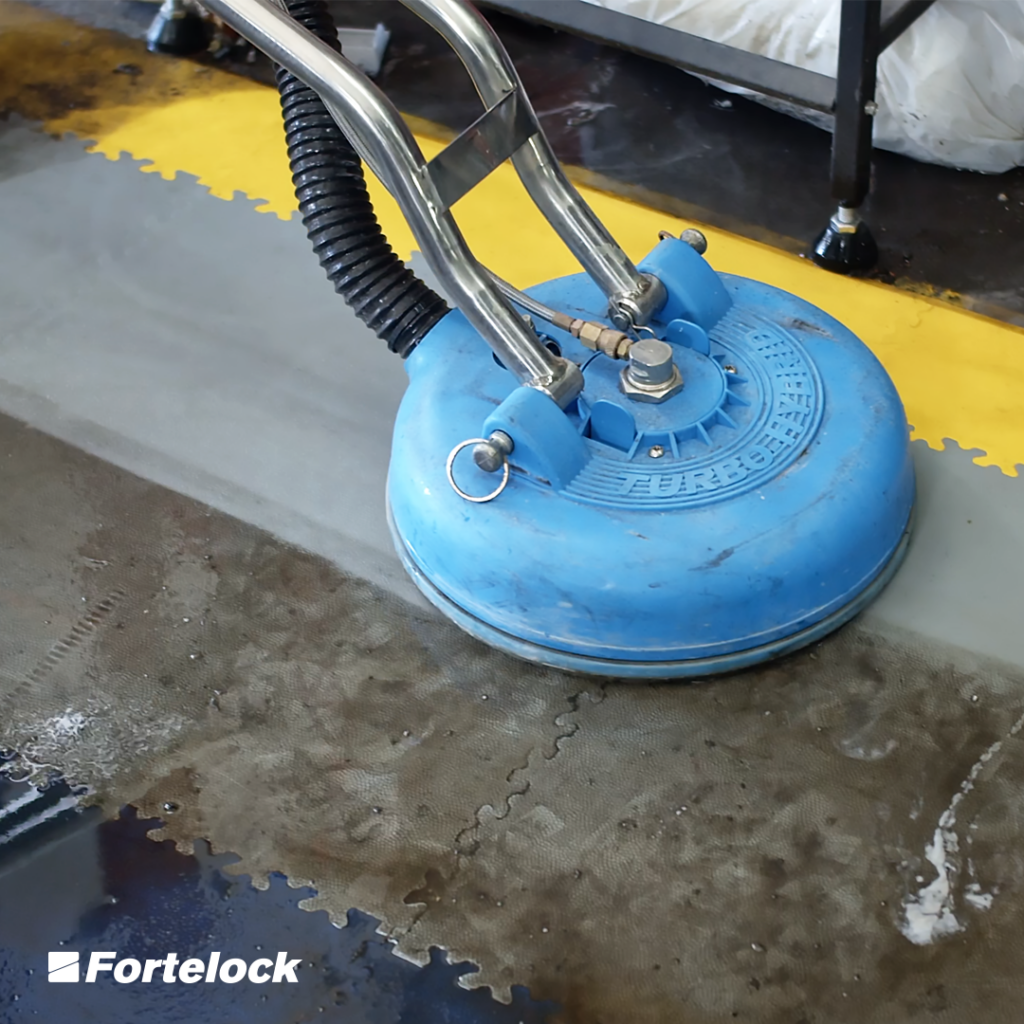6 tips for a perfectly clean floor + bonus at the end
Many customers turn to us for advice on how to properly care for and clean Fortelock plastic tiles. Often they don’t know which cleaning products to use which, at best can result in a dirty floor or one that is more difficult to clean, and at worst damaged tiles. Therefore, here are 6 tips on how to properly care for Fortelock PVC tiles (or other PVC materials such as linoleum).
1. Prevention
We can all certainly agree that the best solution is to not dirty the floor in the first place. In practice, this is impossible but we should try to prevent it from happening as much as possible. The ideal way is to utilise so-called cleaning zones before entering buildings. These should be at least 2–3 steps in size to minimize dirt entering the space. This can be done with mats, which are easy and quick to clean.
2. Regular cleaning
The longer we leave the tiles exposed to dirt, the more difficult it will be to clean them. Regular cleaning will keep your tiles looking like new and make your space more beautiful and presentable. The number of cleanings depends on the intensity of use, but we recommend cleaning the tiles at least once a week. Regular cleaning with special products such as Dr. Schutz Cleaner R 1000 will leave a fine protective wax filter on the tiles after each cleaning, which will protect the tiles from dirt and make them easier to clean.
3. Cleaning product
We often encounter the problem where a customer buys a regular cleaning product and is then disappointed that the tiles cannot be cleaned. This isn’t a tile problem, though, it’s a cleaner problem. With the right cleaner, you can achieve the new tile look very easily. For all Fortelock tiles we recommend cleaners from the renowned German manufacturer Dr. Schutz.
For general and deep cleaning of ingrained dirt, we recommend the Basic Cleaner R, which removes even the most stubborn stains or old protective coatings. Just apply it with the recommended ratio of water, let it work for 10 to 15 minutes, scrub with a brush or cleaning machine, and then simply rinse with water and the floor is as good as new.
For daily and regular cleaning, we recommend the R 1000 Cleaner. Its advantage is that it does not foam, does not leave streaks and also forms a fine protective wax film on the surface of the tiles, which protects them from dirt and also helps make them easier to clean.
Of course, each surface requires a different cleaner – for lacquered surfaces you need to use a special PU cleaner, for ESD tiles an ESD cleaner. For localised stains, the Elatex Universal Stain Remover can be used to remove stains from wine, fruit juice, chocolate, asphalt, chewing gum and so on.
4. Quick removal of dirt
As they say – no need to cry over spilt milk. You need to take a rag and wipe it up. And this is also very important for tiles. Although milk will not harm them, corrosives or solvents such as petrol or diesel can cause irreparable damage to them if they are exposed for a longer period. Therefore, these substances should be removed from the tiles as quickly as possible. In case the liquid leaks into the locks, the tiles should be disassembled as quickly as possible, cleaned and thoroughly dried before being reassembled.
Exactly the opposite approach should be taken when applying cleaning products. When using the Basic Cleaner R, the length of time it is allowed to work on the dirt is extremely important. We recommend allowing the cleaner to work for at least 10 to 15 minutes before removing the dirt. Only in this way can the cleaner effectively break down the ingrained dirt. In case of more stubborn dirt, the procedure can be repeated.
5. There’s no brush like a brush
You can probably imagine how washing a car with a wire brush would end up. The same problem can arise if you clean the tiles with an unsuitable abrasive brush or plate. When cleaning with a cleaning machine, we recommend choosing a cleaning plate with red brushes. And if you’re wondering whether a cleaning plate or a roller is better, we have the answer for you. For patterns, which Fortelock tiles have, cleaning plates with brushes (not pads) are more suitable. They can remove dirt better and faster than roller ones.
When cleaning manually, we recommend using a classic brush with medium-hard bristles that can get into the fine grooves of Fortelock tiles.
6. Protective shield
An effective prevention method against dirtying tiles is the application of a special polyurethane protective varnish, which facilitates their subsequent maintenance and improves their appearance. The varnish is applied directly at the factory and the customer receives a finished varnished tile.
Bonus
We’ve put together a video to show you how to easily get your tiles looking like new again. For this purpose, we selected extremely dirty tiles to which we applied the aforementioned cleaners and procedures. See the results for yourself.

